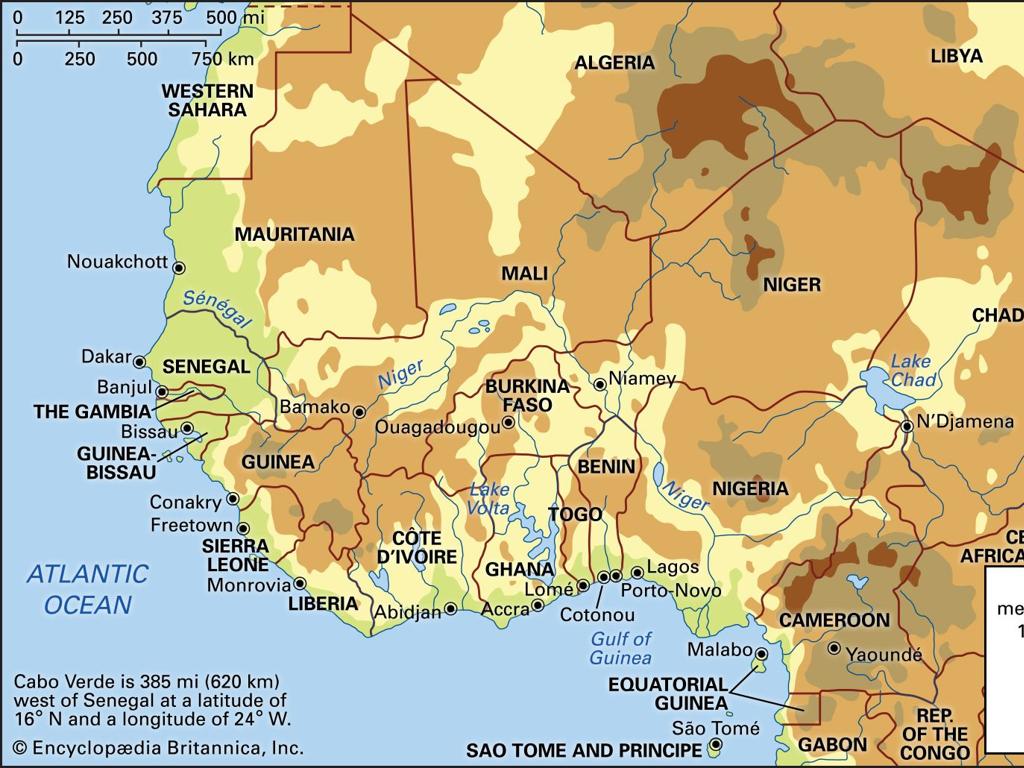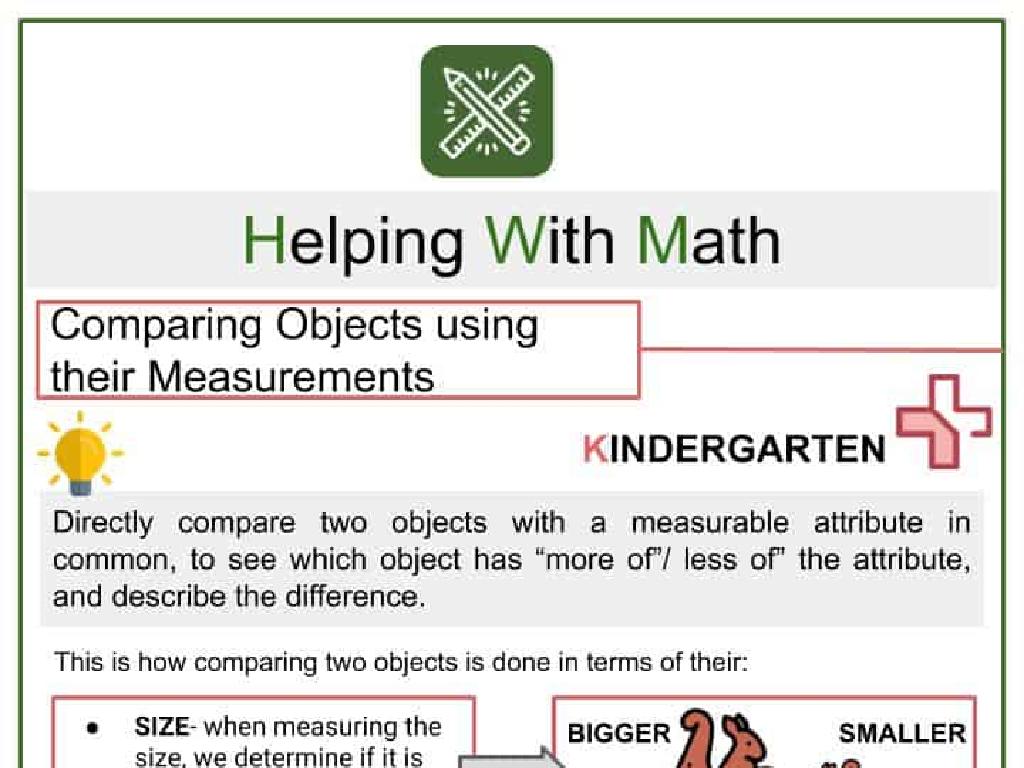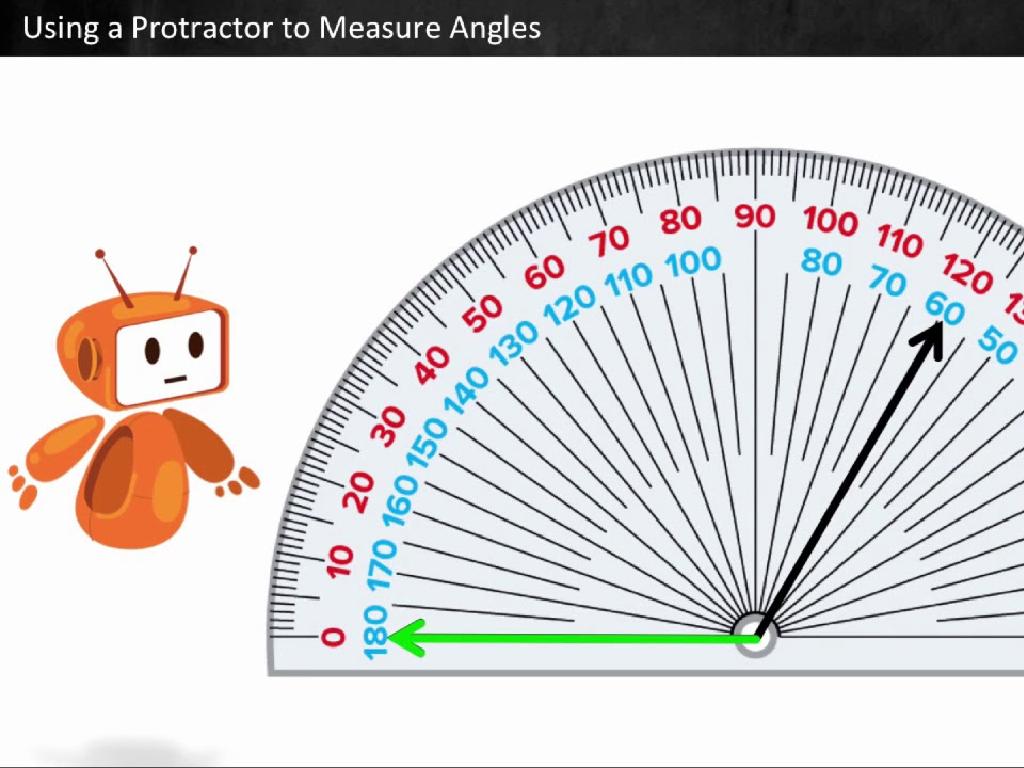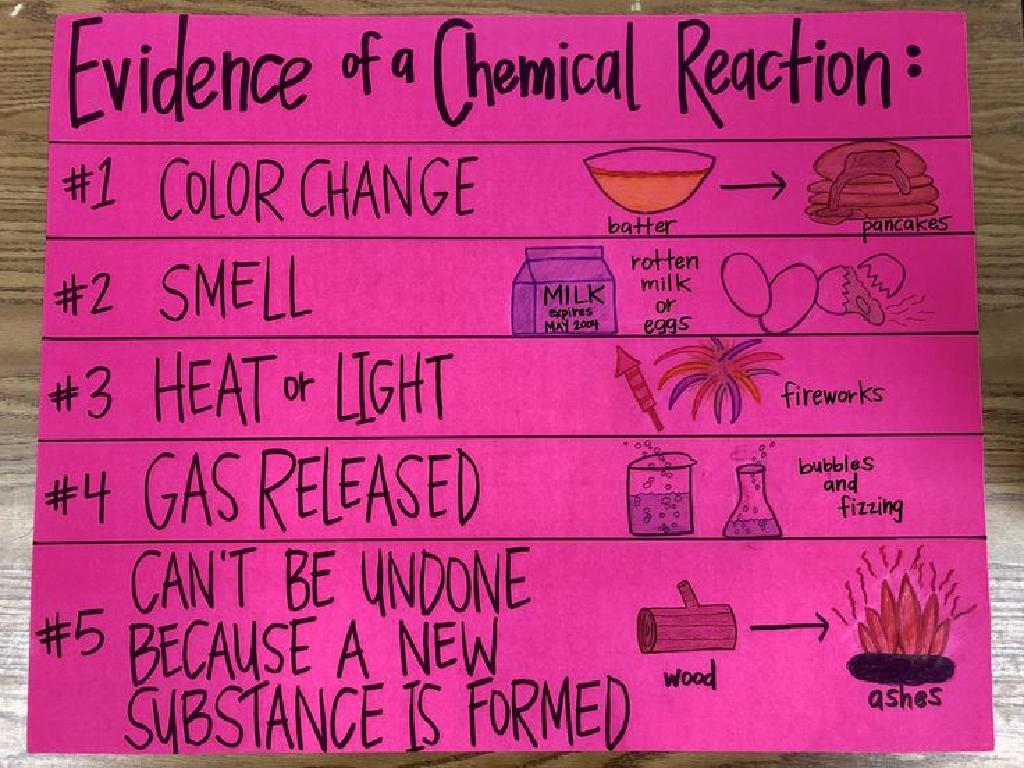Spell The Consonant-L-E Word
Subject: Language arts
Grade: Second grade
Topic: Consonant-L-E
Please LOG IN to download the presentation. Access is available to registered users only.
View More Content
Welcome to Consonant-l-e Words!
– Learn special ‘l-e’ ending words
– Words like ‘table’, ‘apple’, and ‘little’
– Spell and pronounce consonant-l-e
– Break down the sounds: /buhl/, /puhl/, /luhl/
– Practice with fun activities
– Aim to be a spelling superstar!
|
This slide introduces second-grade students to the concept of consonant-l-e words, which are words that end with the ‘l-e’ sound. Start by explaining that these words have a special ending that sounds like ‘uhl’ when pronounced. Demonstrate the pronunciation and spelling of a few examples, such as ‘table’, ‘apple’, and ‘little’. Engage the students with interactive activities where they can practice spelling these words, such as a spelling bee or a matching game. The goal is to help students recognize the pattern and become comfortable with spelling and pronouncing consonant-l-e words, setting them on the path to becoming spelling superstars.
Spelling with Consonant-l-e
– What is Consonant-l-e?
– It’s when words end with a consonant plus ‘le’
– Words ending with consonant-l-e
– Like ‘table’, ‘apple’, ‘simple’
– ‘le’ sounds like ‘ul’
– Say ‘ul’ at the end of ‘bubbl’, ‘littl’, ‘middl’
– Practice with examples
– Find words in books that have consonant-l-e
|
Introduce the concept of Consonant-l-e to the students, explaining that these words end with a consonant followed by ‘le’, which makes a unique ‘ul’ sound. Provide clear examples such as ‘table’, ‘apple’, and ‘simple’ to illustrate the concept. Emphasize the pronunciation of the ‘le’ ending, practicing with the class to ensure they understand the sound it makes. Encourage students to look for words with the Consonant-l-e pattern in their reading and bring them to class for practice. This will help them recognize and spell these words correctly. Prepare a list of additional words for practice and consider creating a fun activity where students can search for these words in a text or create their own sentences using Consonant-l-e words.
Listening to Consonant-l-e Sounds
– Listen to consonant-l-e words
– Pay attention to the ‘l-e’ sound at the end
– ‘le’ sound at word endings
– It’s like the ‘el’ in ‘little’, but at the end
– Repeat words: candle, puddle, turtle
– Say them out loud: ‘can-dle’, ‘pudd-le’, ‘tur-tle’
– Recognize the pattern in words
|
This slide is designed to help students recognize and pronounce the consonant-l-e sound in words. It’s important to articulate the sound clearly and have the students repeat after you to practice. Use words that are familiar and easy to visualize, like ‘candle’, ‘puddle’, and ‘turtle’. Encourage the students to notice the common ‘le’ ending and how it sounds. This will help them in reading and spelling words with the consonant-l-e pattern. Make sure to go around the class and listen to each student pronounce the words to ensure they are getting it right.
Spelling with Consonant-l-e
– Consonant before ‘le’
– Words like ‘apple’ have a consonant before ‘le’
– Silent ‘e’ at the end
– We don’t pronounce the ‘e’, but it changes the sound
– Practice spelling ‘bubble’
– Break it down: ‘b-u-bb-l-e’ spells ‘bubble’
|
This slide introduces the spelling rule for words ending with consonant-l-e, such as ‘bubble’ and ‘apple’. Emphasize that most of these words have a consonant before the ‘le’ and that the ‘e’ at the end is silent but important for the pronunciation of the word. During the lesson, have students practice spelling by breaking down words into individual sounds and letters. Encourage them to identify the consonant-l-e pattern in words and to remember that the ‘e’ is not vocalized. Provide additional examples like ‘candle’, ‘purple’, and ‘turtle’ for practice. This will help students recognize the pattern and apply it to new words they encounter.
Let’s Practice Spelling Consonant-l-e Words!
– I’ll say a word out loud
– Listen for the ‘ul’ sound at the end
– The ‘ul’ sound often comes at the end of words
– Think about how to spell it
– Let’s spell ‘puzzle’ together
– Example: ‘puzzle’ is spelled P-U-Z-Z-L-E
|
This slide is for an interactive class activity designed to help second-grade students recognize and spell words with the consonant-l-e pattern, which often sounds like ‘ul’ at the end of words. As the teacher, you will say a word aloud and then guide the students to spell it together, reinforcing the sound and spelling pattern. Start with an example word like ‘puzzle’ and spell it out loud as a class. Then, proceed with additional words, ensuring to emphasize the ‘ul’ sound. Encourage the students to listen carefully and think about the letters that make up the sound. This activity will help students become more familiar with the consonant-l-e pattern and improve their spelling skills.
Fun with Consonant-l-e Words
– Play a matching game
– Find the consonant-l-e word that fits the picture
– Match pictures to words
– Look at the ending of each word for ‘l-e’
– Partner up for the game
– Work with a classmate to find matches
– Share answers with the class
– Discuss the matches you both found
|
This slide introduces a classroom activity designed to help second-grade students recognize and spell words with the consonant-l-e pattern. Set up a matching game where students have a set of pictures and a corresponding set of words with the consonant-l-e ending. Students will work in pairs to match each picture with the correct word, reinforcing their understanding of the consonant-l-e sound and spelling pattern. After the activity, encourage partners to share their answers with the class to foster a collaborative learning environment. This activity not only aids in phonics and spelling but also in peer learning and communication skills.
Create Your Own Consonant-l-e Book
– Draw an item ending with consonant-l-e
– Example: a turtle or a castle
– Write the consonant-l-e word below
– Make sure to spell the word correctly
– Combine our drawings into a book
– Share our book with the class
– We’ll read our book together!
|
This activity is designed to help second graders recognize and spell words that end with the consonant-l-e pattern. Encourage creativity in their drawings and ensure they understand the spelling pattern by providing examples like ‘turtle’ or ‘castle’. After they write the word under their picture, collect all the pages to create a class book. This will be a fun way to reinforce the lesson and give them a sense of accomplishment when they see their work in a book format. During the next class, have a reading session where the class book is read aloud, and each student can show their artwork and spelling.
Class Activity: Consonant-l-e Word Hunt
– Let’s hunt for words in our classroom
– Find objects with consonant-l-e
– Look for ‘ble’, ‘cle’, ‘dle’, ‘fle’, etc., in object names
– Write down the words you discover
– We’ll discuss our findings together
|
This activity is designed to help students recognize and spell words that have the consonant-l-e pattern. It’s an interactive way to engage the class and make learning fun. Before starting, explain what consonant-l-e words are and give examples like ‘table’, ‘apple’, or ‘circle’. Then, instruct students to search the classroom for items that have this pattern in their names. They should write down each word they find. After the hunt, gather the class and review the words together, helping them spell out and pronounce each one. This reinforces their understanding and helps them remember the pattern. Possible variations of the activity could include drawing the objects, using the words in sentences, or even creating a consonant-l-e word wall with the collected words.
Review and Goodbye!
– Review consonant-l-e words
– Go over the words we learned in class
– Practice saying and spelling
– Repeat after me and spell them out loud
– Praise for today’s effort
– Encourage home practice
– Keep up the good work with your spelling!
|
This slide is meant to wrap up the lesson on consonant-l-e words. Start by revisiting the words that were covered during the class. Engage the students by having them practice saying and spelling each word aloud, reinforcing their learning. Offer praise to acknowledge their hard work throughout the lesson and encourage them to continue practicing at home to improve their spelling skills. This positive reinforcement helps build their confidence and emphasizes the importance of practice in mastering language arts.





